Ignore Agüimes, Gran Canaria at your peril.
With its rich historic and artistic heritage, show-stopping church and perfectly preserved old town this gorgeous town oozes charm. Furthermore, if it’s epic landscapes that you are craving, these are on its doorstep.
Make the most of your time there with my travel guide, which includes what to see and how to get there.
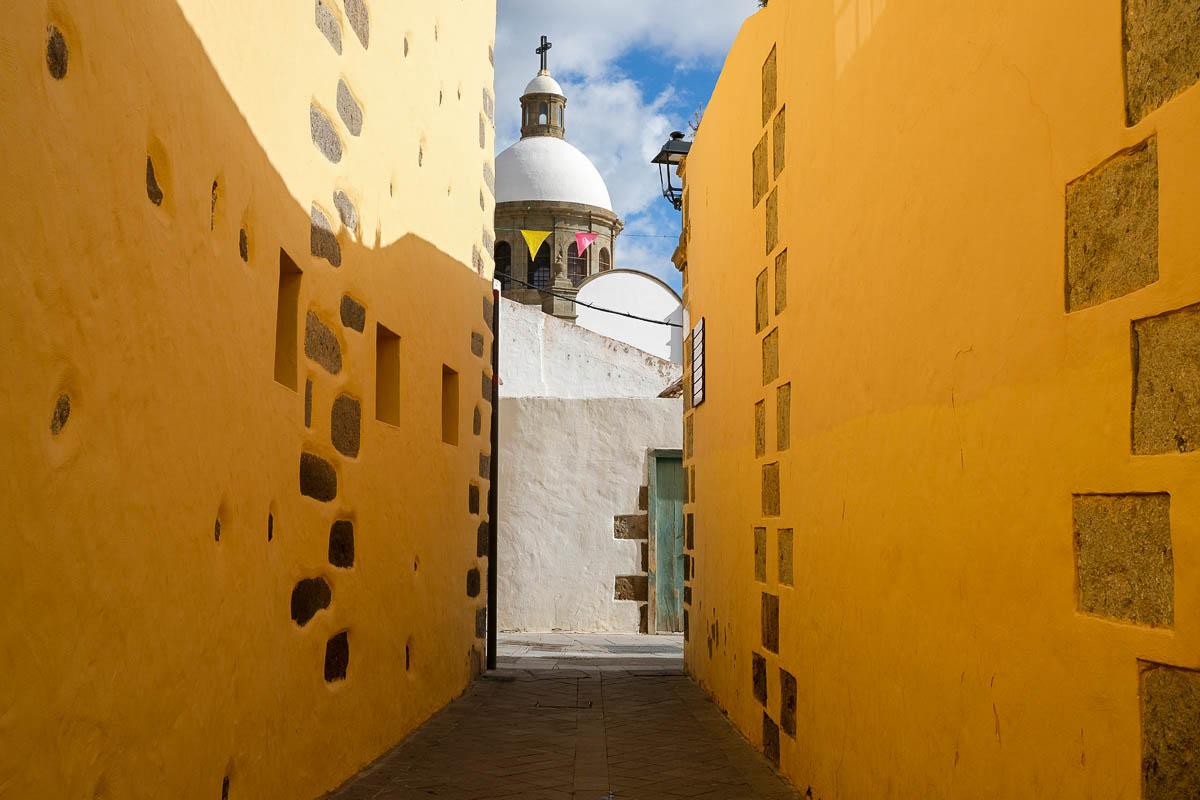
Some articles on this website contain affiliate links. This means that I may earn a small commission if you make a purchase through these links. As an Amazon Associate, I earn from qualifying purchases. Read the full disclosure here.
How I Did a Day Trip to Agüimes
I spent half a day in Agüimes, travelling from Las Palmas, 20 miles to the north, on Gran Canaria’s excellent public transport. This was inexpensive and easy.
I was instantly captivated by Agüimes’ colonial charm. It has photogenic streets around every corner, one of the finest churches on the island and wears its rich history proudly on its sleeve.
Half a day was ample time to visit the Church of San Sebastián and History Museum and soak up the flavour of the town. But if you are tighter on time, you will easily be able to hit the highlights of Agüimes in a relaxed 2 – 3 hours.
When I was there in January, I lucked out with wall-to-wall sunshine. But for reliably mild and pleasant weather, visit in spring (March to May) or autumn (September to November).
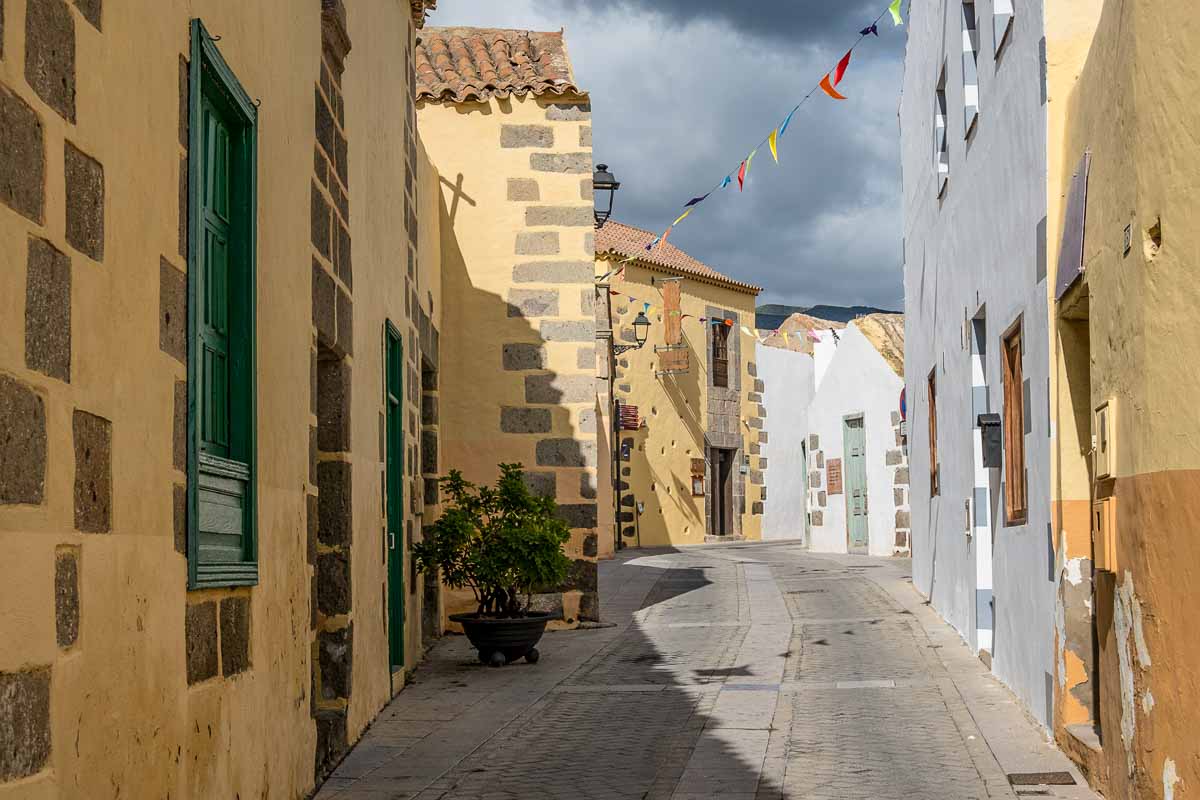
A Short History of Agüimes
Agüimes’ rich history dates back to pre-Hispanic times when Gran Canaria was inhabited by the Guanches, the indigenous people of the Canary Islands. Founded as a church manor town by the Catholic Monarchs in the 15th Century, it was one of the first post-conquest settlements.
The town became an important agricultural centre, producing crops such as sugar cane, grapes and tobacco. It played a significant role in the island’s economy and became known for its skilled artisans who produced pottery, textiles and leather goods. These artistic traditions continue to this day.
What to See in Agüimes
1. Tourist Information Centre & Historical Quarter Visitors’ Centre
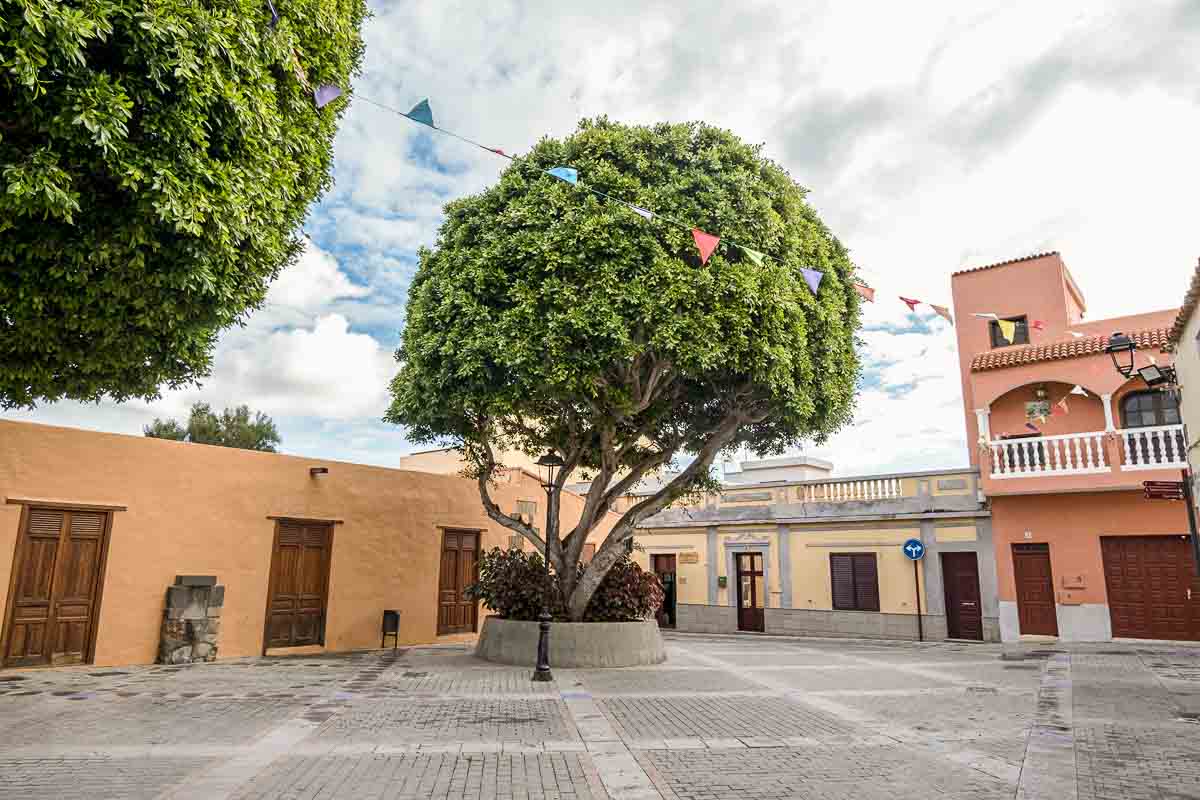
Located on the site of the 17th Century Hermitage of San Antón on Plaza San Antonio Abad, the friendly Tourist Information Centre should be the first stop of your day in Agüimes. They will happily provide a free town map and an information leaflet about the town.
The building also houses the Centro de Interpretación del Casco Histórico. This small exhibition gives you valuable insights into Agüimes’ history and its development from the 16th Century to the present day.
2. Iglesia de San Sebastián (Church of St. Sebastian)
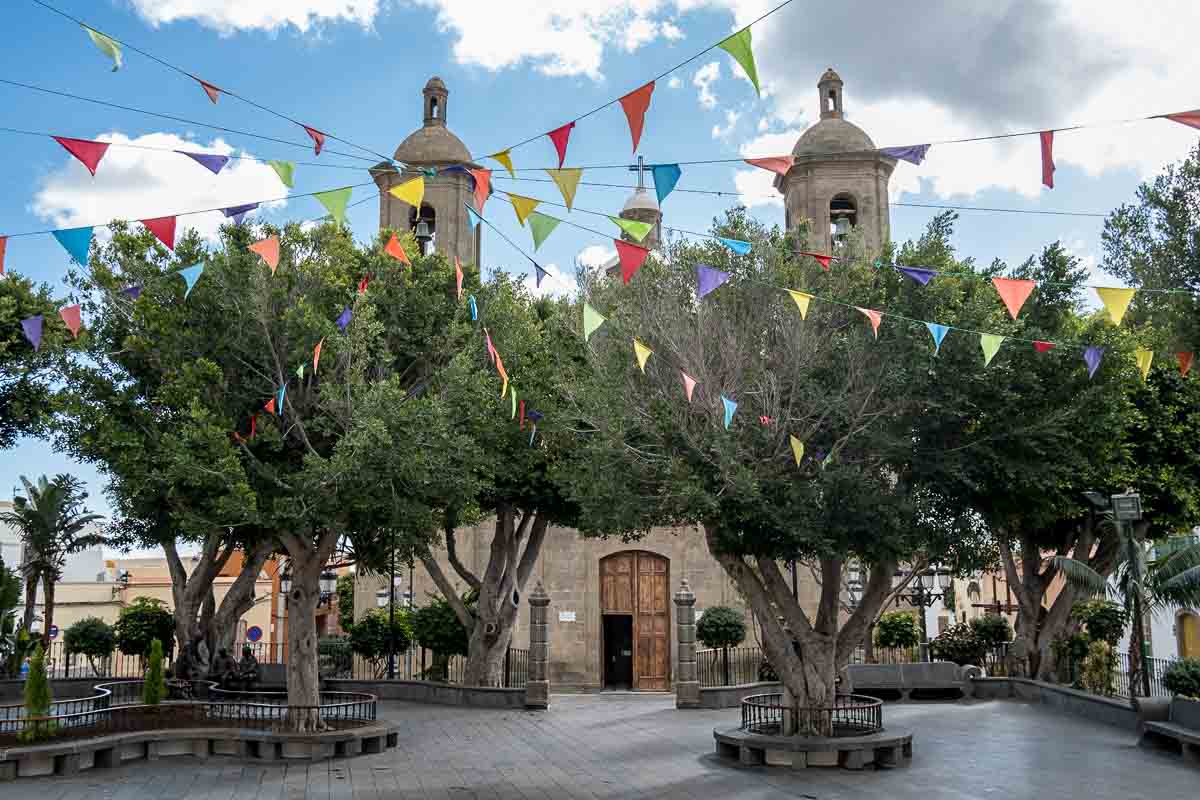
With its twin bell towers and white dome, Iglesia de San Sebastián is Agüimes’ most important landmark.
This temple-like stone church was declared a National Historic Monument in 1981. Although it was designed by the architect Diego Nicolás Eduardo in 1787, Iglesia de San Sebastián wasn’t completed until 1940.
Its Neoclassical façade is one of the finest in the Canary Islands. Inside, the harmonious fusion of Gothic, Neoclassical and Baroque architecture reflects its lengthy genesis.
The church’s artistic treasures include works by Luján Pérez and Martin de Andújar, and the elaborate tabernacle by Lorenzo de Campos.
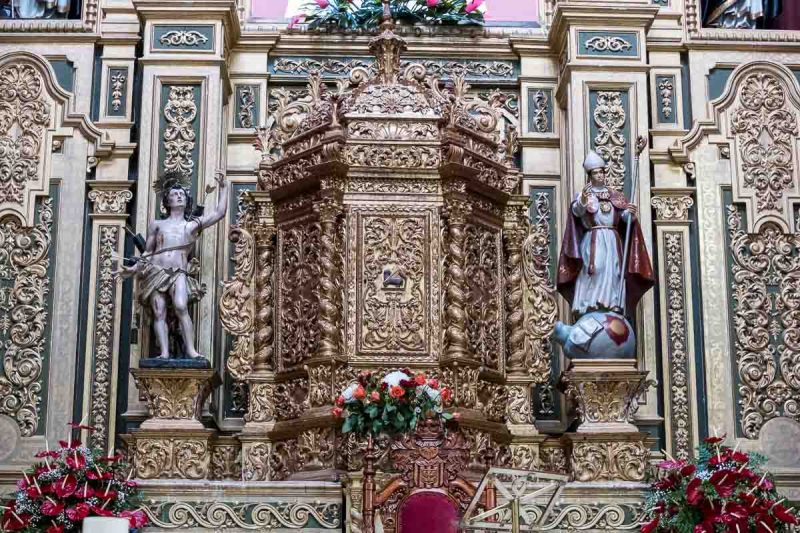
Admission is free. When I visited in 2023, Iglesia de San Sebastián was closed between 1 pm and 5 pm so time your visit right.
3. Plaza de Nuestra Señora del Rosario
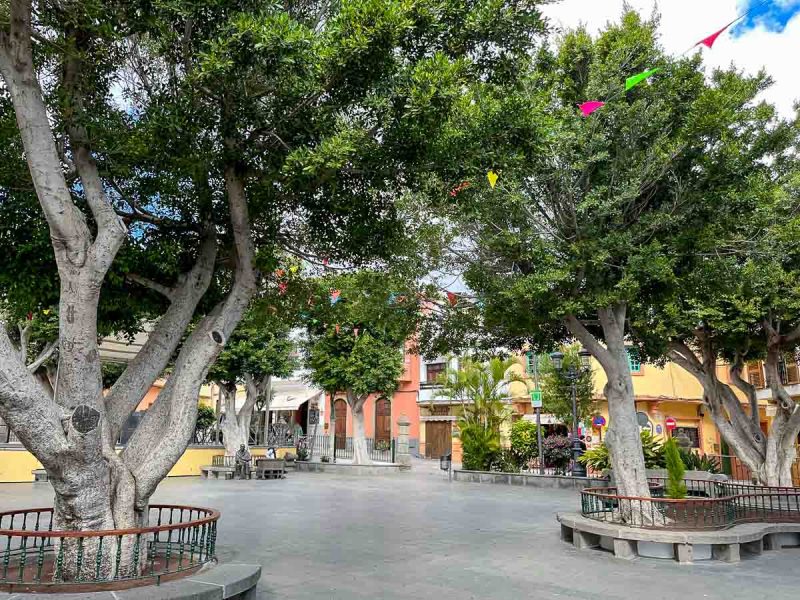
Opposite the church is the lovely Plaza de Nuestra Señora del Rosario, Agüimes’ main square.
Lined with typical Canarian buildings, this is the perfect place to take time out and observe local life go by. There are also a few cafes to top up your caffeine levels.
4. Agüimes’ sculpture trail
It’s hard to miss the striking bronze sculptures in Plaza de Nuestra Señora del Rosario that form part of Agüimes’ sculpture trail. One of the fun things to do in Agüimes is to hunt down this eclectic collection of artworks that celebrate the town’s history.
My favourite sculpture – and a popular photo spot in Agüimes – was the camel in Callejón de la Veguetta, keeping its beady eye on the church.
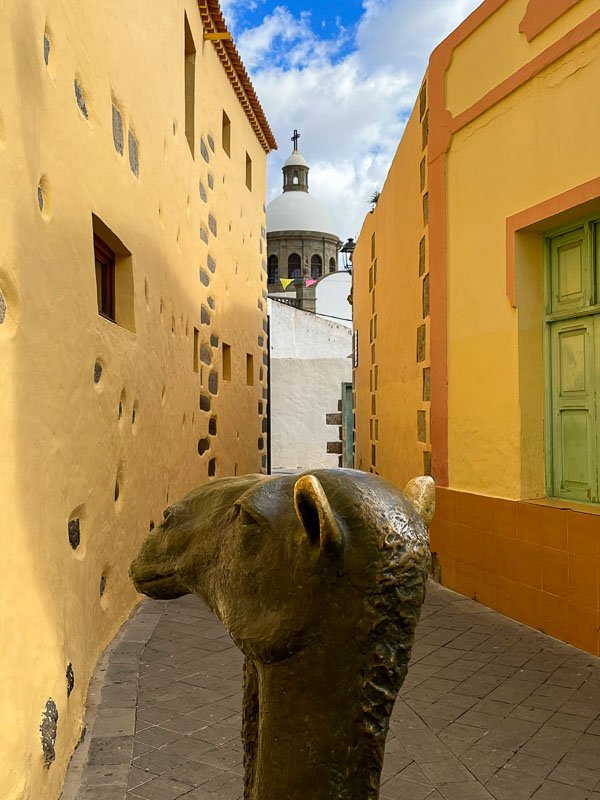
Here are a few more that caught my eye but seek out other favourites for yourself.
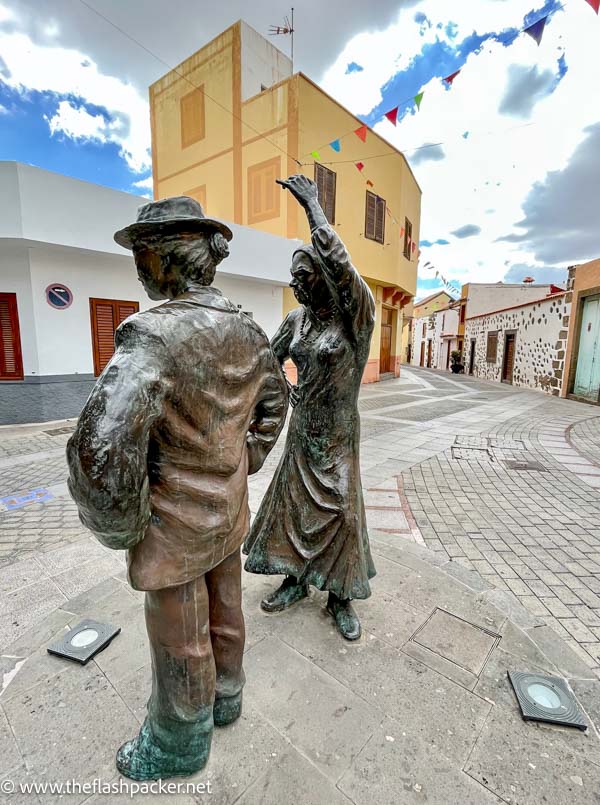
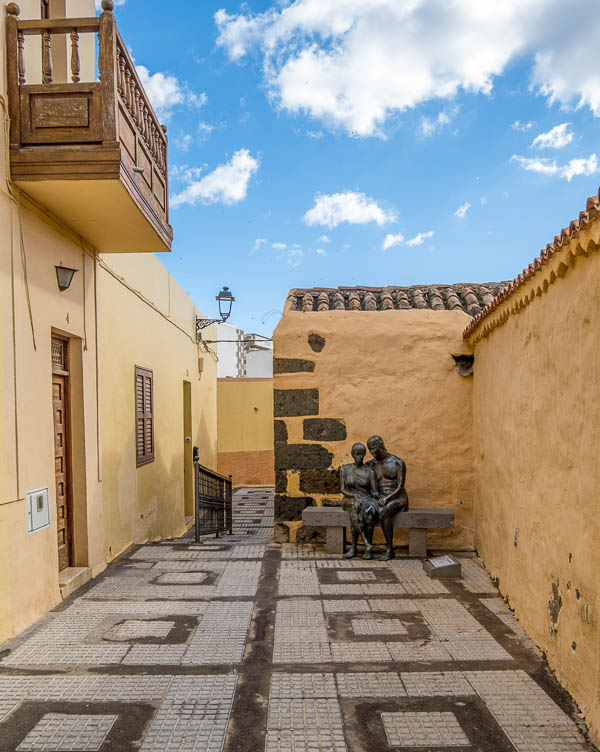
5. Museo de Historia (Agüimes History Museum)
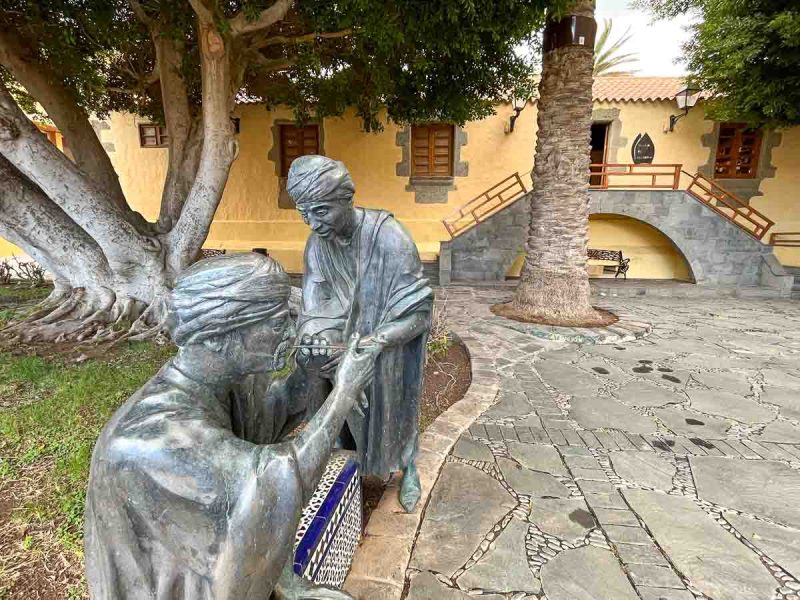
Learn more about five centuries of Agüimes’ history at the Museo de Historia. Housed in the former Episcopal Palace, the Agüimes History Museum traces the social and economic history of the town from the time of conquest until the mid-20th Century.
It’s a charmingly old-fashioned museum with lots of information on boards, most of which is also in English. Many of its artefacts have been donated by residents.
The museum also has a lovely courtyard.
There is a small admission fee to visit. It closes for lunch between 2 pm and 3 pm.
6. Agüimes’ artisan workshops
Tourist Information was quick to point out their town’s artisan workshops. And I am very glad that they did.
Most of these are clustered on Calle Progresso, one of the prettiest streets in Agüimes. I particularly liked Villa del Arte.
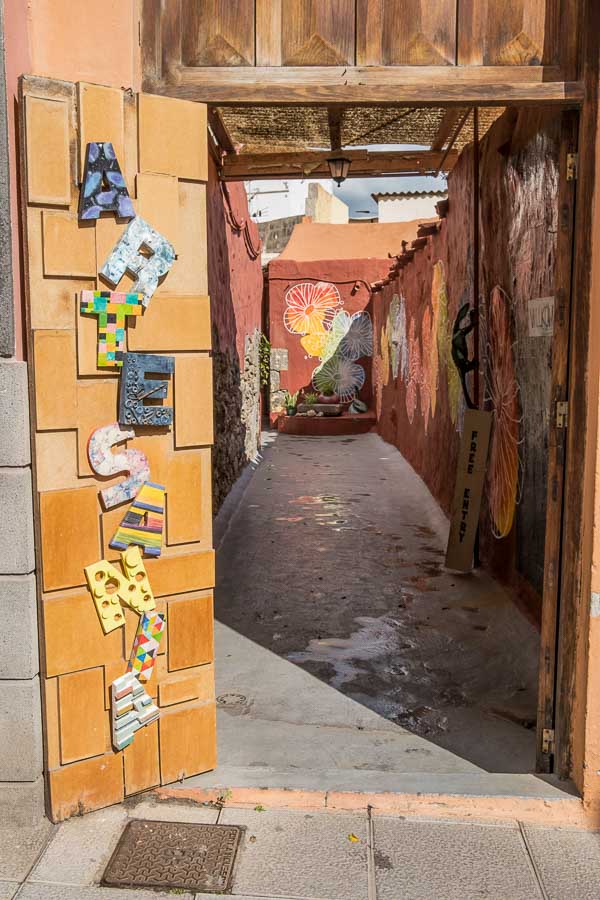
7. The picturesque streets of Agüimes
Trust me; Agüimes is a photographer’s dream destination.
In the absence of town planning, the old quarter is a delightful mish-mash of winding streets and alleyways, lined with lovingly restored 16th and 17th Century buildings. The mustard and ochre hues of the low stone buildings glow in the sunlight, and some of these houses have typical Canarian balconies.
Make sure there is space in your camera’s memory card and that your camera or phone is fully charged.
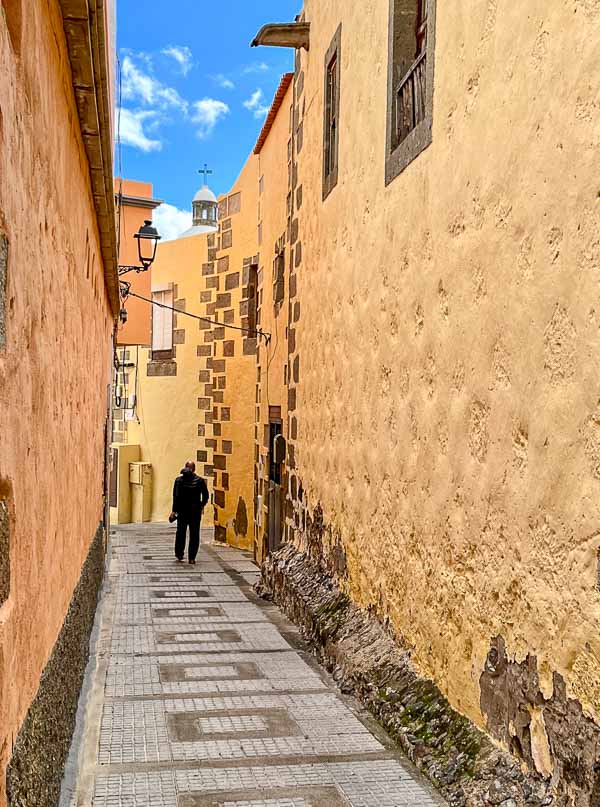
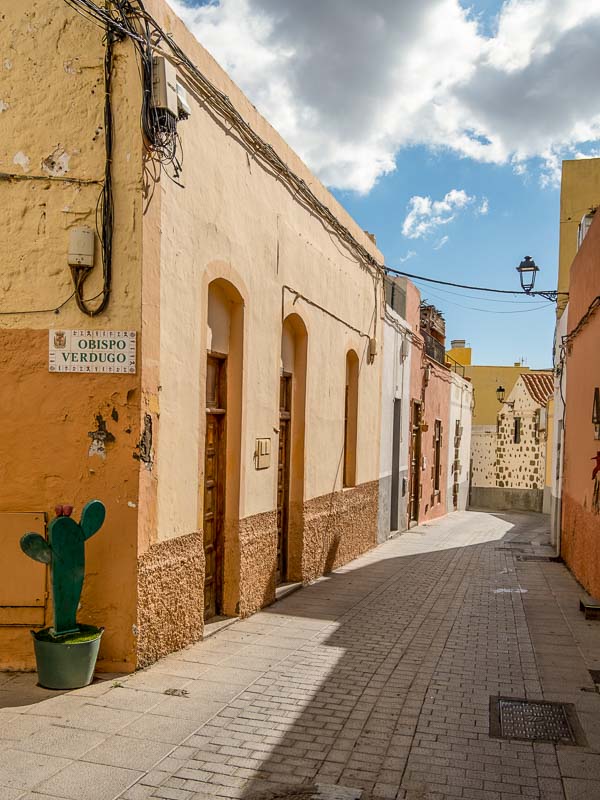
8. Agüimes’ weekly market
I missed this but if markets are your thing, time your day trip to Agüimes to coincide with its weekly market. It takes place in Parque La Rambla every Thursday between 8 am and 1 pm.
Places to Visit Outside Agüimes
If you are visiting Agüimes by car, this is the perfect opportunity to check out the Guayadeque Ravine (Barranco de Guayadeque).
Laced with hiking trails, this is one of Gran Canaria’s most famous beauty spots and is home to important Aboriginal settlements. Although most of the findings are displayed in the Museo Canario – just one of the great places to visit in Las Palmas – you can enter the caves that litter the steep hillside.
How to Get to Agüimes by Bus
Gran Canaria’s bus services drop you off at Agüimes’ Estación de Guaguas, a five-minute walk from the town’s historic quarter along the pedestrianised Paseo de la Viñuele. Make sure you sit on the left-hand side of the bus for a magnificent view as you approach the town.
You can check bus timetables here.
Bus from Las Palmas to Agüimes
Buses #21 and #11 connect Las Palmas with Agüimes. I recommend number 21 as it has fewer stops. The journey takes 45 minutes. In 2024, the one-way fare is €3.40.
Bus from southern resort towns to Agüimes
There is no direct bus from Maspalomas, Playa de Ingles or Puerto de Mogán to Agüimes. You will need to catch a bus to the airport and transfer to #11.
DISCOVER MORE ABOUT GRAN CANARIA!
- Gran Canaria Solo Travel: Itinerary & Essential Guide
- How to Explore Gran Canaria by Bus
- 10 Amazing Things to See in Las Palmas Old Town in One Day
- Top 10 Things to Do in Puerto de Mogán: Gran Canaria’s Little Venice
- Top 10 Things to See in Arucas, Gran Canaria: The Ultimate Guide
- The Ultimate Guide to Teror, Gran Canaria: Nothing to Fear!

About Bridget
Bridget Coleman has been a passionate traveller for more than 30 years. She has visited 70+ countries, most as a solo traveller.
Articles on this site reflect her first-hand experiences.
To get in touch, email her at hello@theflashpacker.net or follow her on social media.
